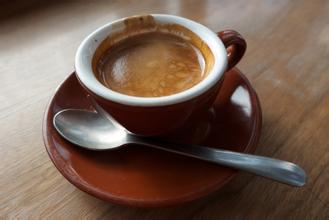Flavor description of Brazilian Yellow bourbon Coffee Bean introduction to the method of Grinding and Calibration of varieties
Flavor description of Brazilian Yellow bourbon Coffee Bean introduction to the method of Grinding and Calibration of varieties
Other kinds of Brazilian coffee, such as Rio and Parana, can be produced in large quantities because they do not require too much care. Although the taste is rough, it is a kind of high-quality and inexpensive coffee, which has its own standards because it is distributed all over Brazil and varies in quality (NO.2~NO.8 according to the number of sundries, NO.13~NO.19 according to the size of beans, and six grades according to taste). Almost all Arabica varieties are of good quality and stable in price. The most famous one is "Brazil Santos", which has been a necessity of blended coffee and is familiar to the public since ancient times. Recently, the rating of "Guilma Cup" is also very high.
At present, there are 2 million hectares of land in Brazil for growing coffee, and the largest is Arabica. These beans will eventually be sent to large bakers in various countries, that is, the well-known Santos (named after the port of export santos, not the producing area). Because of the coffee competition after 2000, the quality of coffee beans produced in the high-altitude areas of the south was appreciated, mainly by the farms around the Minas platform. Coffee quality is also the largest among Brazilian beans, such as Syracuse in the west of Minas and Matas in the east, Bashiya in the north or small farms in the south. Minas has almost become synonymous with Brazilian boutique coffee. In recent years, the coffee competition is accurate to be separated by treatment (water treatment / half water washing / half sun / sun exposure), developing a variety of flavors, mouthfeel and aftertaste.
Flavor features: balanced sweet, creamy smooth, orange, apricot and other fruit flavor, chocolate, caramel flavor coffee was first introduced to Brazil in the early 18th century. In 1727, the Brazilian government sent a personable army officer to secretly bring coffee seeds from French Gaiana to Brazil on the grounds of mediating border disputes. it is said that the governor's wife of French Gaiana was fascinated by this officer at that time. So he secretly brought coffee tree seeds to him at the farewell dinner. At present, 2 million hectares of land in Brazil is used to grow coffee, with a maximum of more than 70% being Arabica. These beans will eventually be sent to large roasters in various countries, that is, Santos (in the name of the port of export santos, not the producing area). Facts have proved that Brazil is also capable of producing gourmet coffee and small batches of coffee. Local boutique coffee can not only be provided by small-scale coffee farmers.

Important Notice :
前街咖啡 FrontStreet Coffee has moved to new addredd:
FrontStreet Coffee Address: 315,Donghua East Road,GuangZhou
Tel:020 38364473
- Prev

Panama Kaddura Coffee Bean Flavor description Taste Variety characteristics treatment Manor introduction
Panama Kaddura coffee bean flavor description, variety characteristics treatment manor introduction in such a unique planting environment, naturally will not be the only emerald rose summer, regardless of flavor quality and value of the coffee king will be; but drinking rose summer every day I think it is quite extravagant, and even if there is no economic pressure, it is not like eating shark fin and bear paw every day.
- Next

Sidamo Guji Coffee Bean Grinding Scale Processing Method Variety Manor Introduction to the production area
Sidamo Province (Sidamo) plateau area at an altitude of 2,000 meters, is an outstanding representative of African washed coffee, coffee connoisseurs in the eyes of the world has been renowned, rare washed high-quality Arabica coffee, suitable for all degrees of roasting, perfect to present a fresh and bright floral aroma, beautiful finish
Related
- Detailed explanation of Jadeite planting Land in Panamanian Jadeite Manor introduction to the grading system of Jadeite competitive bidding, Red bid, Green bid and Rose Summer
- Story of Coffee planting in Brenka region of Costa Rica Stonehenge Manor anaerobic heavy honey treatment of flavor mouth
- What's on the barrel of Blue Mountain Coffee beans?
- Can American coffee also pull flowers? How to use hot American style to pull out a good-looking pattern?
- Can you make a cold extract with coffee beans? What is the right proportion for cold-extracted coffee formula?
- Indonesian PWN Gold Mandrine Coffee Origin Features Flavor How to Chong? Mandolin coffee is American.
- A brief introduction to the flavor characteristics of Brazilian yellow bourbon coffee beans
- What is the effect of different water quality on the flavor of cold-extracted coffee? What kind of water is best for brewing coffee?
- Why do you think of Rose Summer whenever you mention Panamanian coffee?
- Introduction to the characteristics of authentic blue mountain coffee bean producing areas? What is the CIB Coffee Authority in Jamaica?

